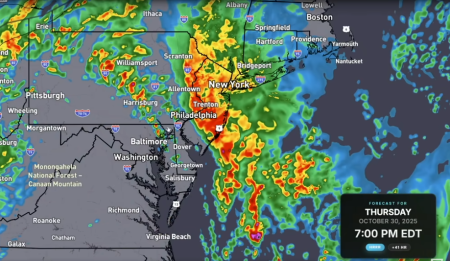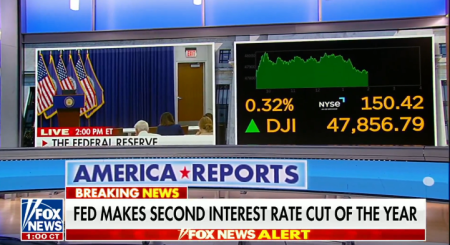BREAKING: Signature Bank Collapse Redux! New York Community Bank’s 40% Plunge Reignites Banking Crisis!
Ready to uncover the truth? Sick of the lies? Join our Telegram Channel now. It’s time for the real story! My gratitude to all my readers!
BREAKING: New York Community Bank nosedives 40% in a shocking repeat of the Signature Bank collapse, igniting a new wave of financial chaos. Discover the systemic failures putting your savings at risk and the global agendas fueling this crisis. Act now to protect your assets!
In a devastating financial twist, New York Community Bank ($NYCB) has nosedived by nearly 40% after releasing its latest earnings report. This shockwave, stemming from the same bank that previously acquired the collapsed Signature Bank, underscores an alarming systemic issue within the banking sector. As economies teeter on the edge and savers brace for more volatility, many are left wondering: what does this banking crisis mean for the financial future of ordinary people?
Table of Contents
New York Community Bank’s Dramatic Decline: What Happened?
Signature Bank Collapse Redux: A Crisis Reignited
The Bigger Picture: Systemic Weaknesses in the Banking Sector
Impact on Savers and Everyday Citizens: A Bleak Forecast
Global Power Plays: How Globalist Agendas Fuel Financial Instability
Preparing for an Economic Crash: What Can People Do Now?
A Rallying Call for Financial Justice: How to Fight Back
1. New York Community Bank’s Dramatic Decline: What Happened?
In the financial world, where fortunes rise and fall daily, a near-40% drop in a single day for a major bank stands out as an unmistakable red flag. Onlookers and analysts were left stunned as New York Community Bank (NYCB) reported significant losses, far exceeding any preemptive estimates from market experts. This plummet, coming on the heels of a major acquisition—namely Signature Bank’s assets post-collapse—has reignited fears of a domino effect in the banking industry.
NYCB’s recent financial results revealed that the institution’s attempts to stabilize itself post-acquisition were unsuccessful. With this drastic decline, NYCB has drawn intense scrutiny from financial experts, economists, and, importantly, its customer base. Investors who once trusted the resilience of established institutions now find themselves grappling with an uncertain future.
RELATED: BOOOM!!! The BRICS Currency Note Presented to Putin: The BRICS Currency Note A Revolution in Motion
The New York Community Bank’s decline is not merely a reflection of a single institution’s struggles; it signals a troubling trend in today’s economy. Financial regulations, risk management practices, and the sheer weight of accumulating liabilities all point to cracks in the very foundation of our banking infrastructure.
2. Signature Bank Collapse Redux: A Crisis Reignited
Signature Bank’s failure served as a wake-up call, or at least it should have. Its collapse created waves in the market, with widespread layoffs, asset losses, and diminishing customer confidence hitting local economies hard. At the time, NYCB stepped in, acquiring the remains of Signature in what was seen as a necessary rescue. But now, with NYCB facing its own decline, the memory of Signature’s collapse feels more like a prelude to a much larger narrative unfolding across the financial sector.
The interconnectivity of these financial institutions means that when one bank falters, the potential fallout can be catastrophic, reaching from Wall Street to Main Street. Each collapse reveals not only vulnerabilities within the individual banks but weaknesses in the systems designed to protect depositors and stabilize the economy.
IS SALT A SPIRITUAL WEAPON? Uncover the SECRET that can CHANGE your LIFE!
 3. The Bigger Picture: Systemic Weaknesses in the Banking Sector
3. The Bigger Picture: Systemic Weaknesses in the Banking Sector
The downfall of New York Community Bank is, tragically, part of a much broader issue. This collapse isn’t a standalone event; it’s symptomatic of a larger, creeping malaise within the entire financial system. Structural weaknesses, risky investments, lax regulations, and poor oversight all contribute to the repeated failures we are now witnessing.
Despite the lessons from past crises, many banks, it seems, are still playing fast and loose with their practices. The public has every reason to feel betrayed, particularly when they see repeated lapses in accountability for financial institutions. Each time a bank falls, it leaves taxpayers on the hook for bailouts, shakes consumer confidence, and devastates local communities that depend on these financial institutions for economic stability.
Even more disturbing is that each of these collapses brings to light the vulnerabilities within a global financial system that prioritizes corporate gain over individual security. Without drastic changes in regulatory oversight and risk management, there’s little to prevent future crises from taking root and spreading like wildfire.
4. Impact on Savers and Everyday Citizens: A Bleak Forecast
What does this latest collapse mean for everyday citizens, for those who have dutifully saved, who depend on stable banking institutions to keep their money secure? A harsh truth lies in the potential loss of consumer savings, as deposit insurance only covers so much. Many working-class and middle-income families might find themselves struggling to rebuild their savings if their banks face further losses or closures.
The reality is sobering: with each bank that fails, individuals are left questioning the very security of their money. When confidence wanes, people often turn to alternative, and sometimes risky, methods of storing their wealth, such as speculative investments or cryptocurrencies. However, these methods carry their own risks, often beyond what an average saver can manage without facing significant potential losses.
For savers and the common citizen, a growing fear looms over each new bank failure. The wake-up call is here, loud and clear: the security once promised by traditional banking might be nothing more than an illusion.
WARNING: Viral Content! Scientists from Fukushima University of Japan just proved this silent clog is the real cause of BPH in millions of men…
5. Global Power Plays: How Globalist Agendas Fuel Financial Instability
One cannot ignore the role of globalist agendas in shaping the economic landscape we’re navigating today. The World Economic Forum (WEF) and similar entities have long advocated for a system that centralizes power and control, where financial policies often prioritize the agenda of the elite over the well-being of the masses. These agendas influence the governance of banks, the flow of funds, and even the direction of economies.
Under these frameworks, local economies and individuals are often sacrificed on the altar of “greater global interests,” resulting in financial policies that destabilize more than they secure. The influence of these powerful institutions, intertwined with government and major financial corporations, can lead to the prioritization of global interests, often at the expense of national and local financial stability.
Many now argue that we have a common enemy in these globalist agendas, ones that perpetuate economic dependency and detract from financial sovereignty. The crisis at NYCB and the echo of Signature Bank’s collapse are vivid reminders of a much larger, more coordinated game at play.
6. Preparing for an Economic Crash: What Can People Do Now?
The signs of an impending economic downturn are all around us. For the average individual, facing a system that seems stacked against them can feel overwhelming. However, now is the time to take proactive steps to protect assets, minimize debt, and safeguard savings. By diversifying income sources, investing cautiously, and staying informed about financial trends, citizens can begin to shield themselves from the effects of these crashes.
One of the best ways to prepare is by holding cash in hand, diversifying investments, and possibly exploring safer asset options like precious metals. Additionally, cutting down on unnecessary expenses, building emergency funds, and avoiding over-reliance on credit can provide a buffer against future financial turmoil.
Preparation is not paranoia—it’s prudence. In a world where financial institutions are crumbling and the security of one’s wealth is constantly threatened, taking action now can make all the difference in weathering the storm ahead.
7. A Rallying Call for Financial Justice: How to Fight Back
The financial crises of our times aren’t just economic issues—they’re symptomatic of deeper systemic and social injustices. People need to stand united, to demand accountability, transparency, and a restructuring of the economic system to serve all, not just the elite. Ordinary people are not powerless; the first step to fighting back is recognizing the need for financial literacy, advocacy, and community resilience.
Organizing, advocating for fair financial practices, and educating oneself and others about the dangers posed by unchecked banking practices can collectively create a force for change. As communities rally together, whether online or in local forums, a powerful message can be sent: enough is enough.
No more should the working class and savers be burdened with the consequences of corporate greed. By holding leaders and institutions accountable, we can lay the groundwork for a fairer, more transparent financial system.
Conclusion
The collapse of New York Community Bank is a clarion call—a sign that our financial systems, and the trust we place in them, are more fragile than we’d like to believe. As bank after bank falters, it’s clear that this is no longer just a series of isolated incidents. The systemic weaknesses and global power dynamics that drive these crises need to be exposed and addressed.
NY Community Bank collapses
LauraAbolichannel pic.twitter.com/sRq3okE4sP
— Jack Straw (@JackStr42679640) October 24, 2024








